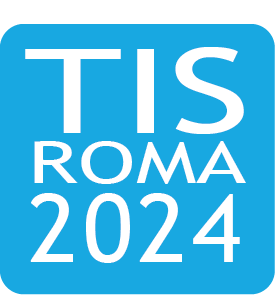TIS 2017
Session 14 – Airport planning, design and management

A very interesting session chaired by Olja Čokorilo discussed the problems of modern Airports design and maintenance. Moreover, the topics of Airport accessibility and of Airport operations impact of were presented during this 14th session.
Evandro José Da Silva and Nicolau D. F. Gualda – A computational model for aerodrome geometry analyses of conformity to ICAO design standards / A computational model to conform an aerodrome geometry to the ICAO Annex 14 standards was presented. These standards impose geometric characteristics on runways, taxiways and aprons, as well as protection surfaces free of interferences according to the project aircraft. The model generates a KML file that can be read in a virtual globe such as Google Earth or in a GIS desktop as QGIS. It allows automatic analysis of possible aerodrome geometry conflicts. Model functionality has been verified for both hypothetic and real world instances. The author showed results of its application to the Viracopos Airport in Campinas, Brazil (SBKP).
Mario De Luca, Demetrio Carmine Festa and Giuseppe Guido – Modeling airport noise using Artificial Neural Networks and Non-Linear Analysis / In this work two models are built to estimate the level of aircraft noise (Lva) around populated areas. In particular the study evaluates the effects of this phenomenon on people and buildings. Data of the level of noise pollution (Lva), were detected on the airport of Lamezia Terme (IATA: SUF, ICAO: LICA). The data were processed with the Non-Linear technique and Artificial Neural Network technique. Both models showed good predictive ability in terms of Lva. The simulation capacity of the models was tested on samples coming from the same airport, but not used to built the models.
Ioannis Politis, Georgios Georgiadis and Panagiotis Papaioannou – Airport ground access logit choice models for fixed track systems / In this study, binary logit models are developed in order to identify the mode and user specific parameters that affect airport ground access mode choice. The airport under examination is the International Airport “Macedonia” of Thessaloniki. A combined revealed and stated preference study examined the significant factors that influence airport visitors’ choices against three future alternative fixed track public transport systems. The results indicate significant relation of mode specific variables with the final choice. User specific attributes of gender, age and trip frequency was found in the case of bus and taxi users to have an explanatory power on mode choice. Finally, travel and cost elasticities for the different examined cases are presented and commented.
Laura Moretti, Giuseppe Cantisani, Paola Di Mascio, Stefano Nichele and Silvia Caro – A runway veer-off risk assessment based on frequency model: Part I, probability analysis and Part II, risk analysis / In these two parts a comprehensive airport risk assessment methodology was presented, for aircraft runway veer-off accidents around the world. The most frequent causes for this type of accidents are inappropriate pilot performance and aircraft damage; while influential factors include transversal wind, contamination of the runway, and poor visibility. A successful probabilistic model of veer-off accidents was developed in the first part. The second part assesses the level of safety guaranteed by the Cleared and Graded Area (CGA), which is a part of the Runway strip that enhances the deceleration of an aircraft in the case of an excursion. Therefore, a model of veer-off accident was developed to quantify the risk of an event. The results for the risk analysis of veer-off accidents showed that there are some cases for which the Real Level of Safety (RLS) was higher than the proposed Target Level of Safety (TLS), meaning that the level of damage expected is higher than the proposed one. An application example of the model complies to the requirements of the ICAO Regulation for non-instrument Code A run-ways.
Aleksander Ljubic – High Modulus Asphalt Concrete for Ljubljana Airport Apron / Central part of the apron at the Ljubljana airport from 1978 was scheduled for reconstruction in 2014 because of the increased traffic loads and subsequent distress of the existing asphalt pavement. Because of the traffic situation and faster completion time the asphalt pavement was chosen for the reconstruction and for the planned high traffic loading and severe climatic conditions a suitable asphalt mix had to be selected. A high stiffness modulus asphalt mix was chosen for base layers and the article describes the mix design, its testing and finally completed reconstruction of the airport apron area.
CHAIRMAN: Olja Cokorilo
